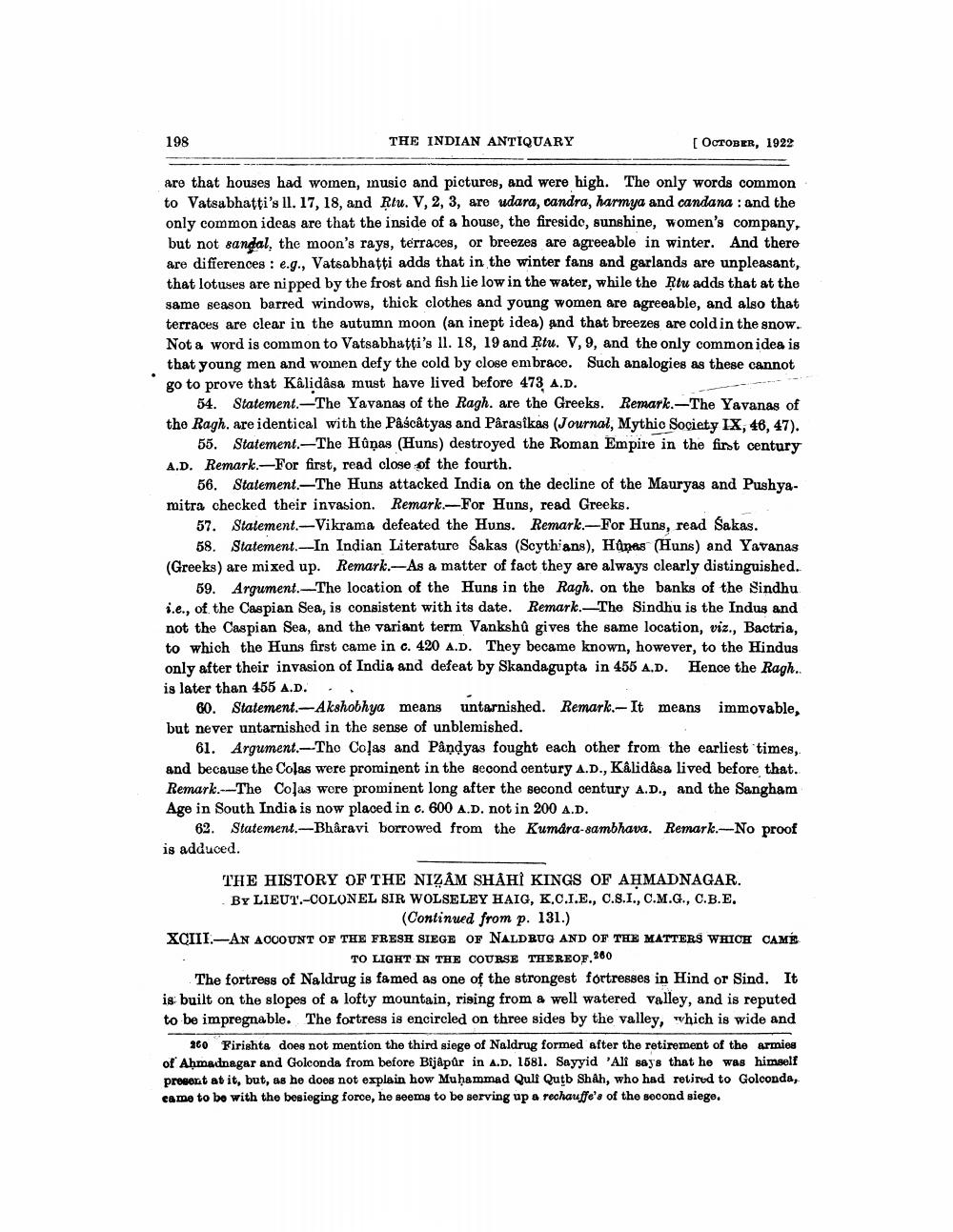________________
198
THE INDIAN ANTIQUARY
[ OCTOBER, 1922
are that houses had women, music and pictures, and were high. The only words common to Vatsabhatti's ll. 17, 18, and Ṛtu. V, 2, 3, are udara, candra, harmya and candana : and the only common ideas are that the inside of a house, the fireside, sunshine, women's company, but not sandal, the moon's rays, terraces, or breezes are agreeable in winter. And there are differences: e.g., Vatsabhatti adds that in the winter fans and garlands are unpleasant, that lotuses are nipped by the frost and fish lie low in the water, while the Ṛtu adds that at the same season barred windows, thick clothes and young women are agreeable, and also that terraces are clear in the autumn moon (an inept idea) and that breezes are cold in the snow. Not a word is common to Vatsabhatti's 11. 18, 19 and Ṛtu. V, 9, and the only common idea is that young men and women defy the cold by close embrace. Such analogies as these cannot go to prove that Kâlidâsa must have lived before 473 A.D.
54.
Statement. The Yavanas of the Ragh. are the Greeks. Remark.-The Yavanas of the Ragh, are identical with the Pâścâtyas and Pârasikas (Journal, Mythic Society IX, 46, 47). 55. Statement. The Hûnas (Huns) destroyed the Roman Empire in the first century A.D. Remark. For first, read close of the fourth.
56. Statement. The Huns attacked India on the decline of the Mauryas and Pushyamitra checked their invasion. Remark.-For Huns, read Greeks.
57. Statement.-Vikrama defeated the Huns. Remark.-For Huns, read Sakas. 58. Statement. In Indian Literature Sakas (Scythians), Hunes (Huns) and Yavanas (Greeks) are mixed up. Remark.-As a matter of fact they are always clearly distinguished. 59. Argument. The location of the Huns in the Ragh. on the banks of the Sindhu i.e., of the Caspian Sea, is consistent with its date. Remark. The Sindhu is the Indus and not the Caspian Sea, and the variant term Vankshû gives the same location, viz., Bactria, to which the Huns first came in c. 420 A.D. They became known, however, to the Hindus only after their invasion of India and defeat by Skandagupta in 455 A.D. Hence the Ragh.. is later than 455 A.D.
60. Statement.-Akshobhya means untarnished. Remark.-It means immovable, but never untarnished in the sense of unblemished.
61. Argument. The Colas and Pândyas fought each other from the earliest times, and because the Colas were prominent in the second century A.D., Kâlidâsa lived before that. Remark. The Colas were prominent long after the second century A.D., and the Sangham Age in South India is now placed in c. 600 A.D. not in 200 A.D.
62. Statement.-Bhâravi borrowed from the Kumara-sambhava. Remark.--No proof is adduced.
THE HISTORY OF THE NIZAM SHAHI KINGS OF AHMADNAGAR. BY LIEUT.-COLONEL SIR WOLSELEY HAIG, K.C.I.E., C.S.I., C.M.G., C.B.E. (Continued from p. 131.)
XCIII. AN ACCOUNT OF THE FRESH SIEGE OF NALDRUG AND OF THE MATTERS WHICH CAMÉ TO LIGHT IN THE COURSE THEREOF.2 260
The fortress of Naldrug is famed as one of the strongest fortresses in Hind or Sind. It is built on the slopes of a lofty mountain, rising from a well watered valley, and is reputed to be impregnable. The fortress is encircled on three sides by the valley, which is wide and
260 Firishta does not mention the third siege of Naldrug formed after the retirement of the armies of Ahmadnagar and Golconda from before Bîjâpûr in A.D. 1581. Sayyid 'Ali says that he was himself present at it, but, as he does not explain how Muḥammad Quli Qutb Shah, who had retired to Golconda, came to be with the besieging force, he seems to be serving up a rechauffe's of the second siege.




